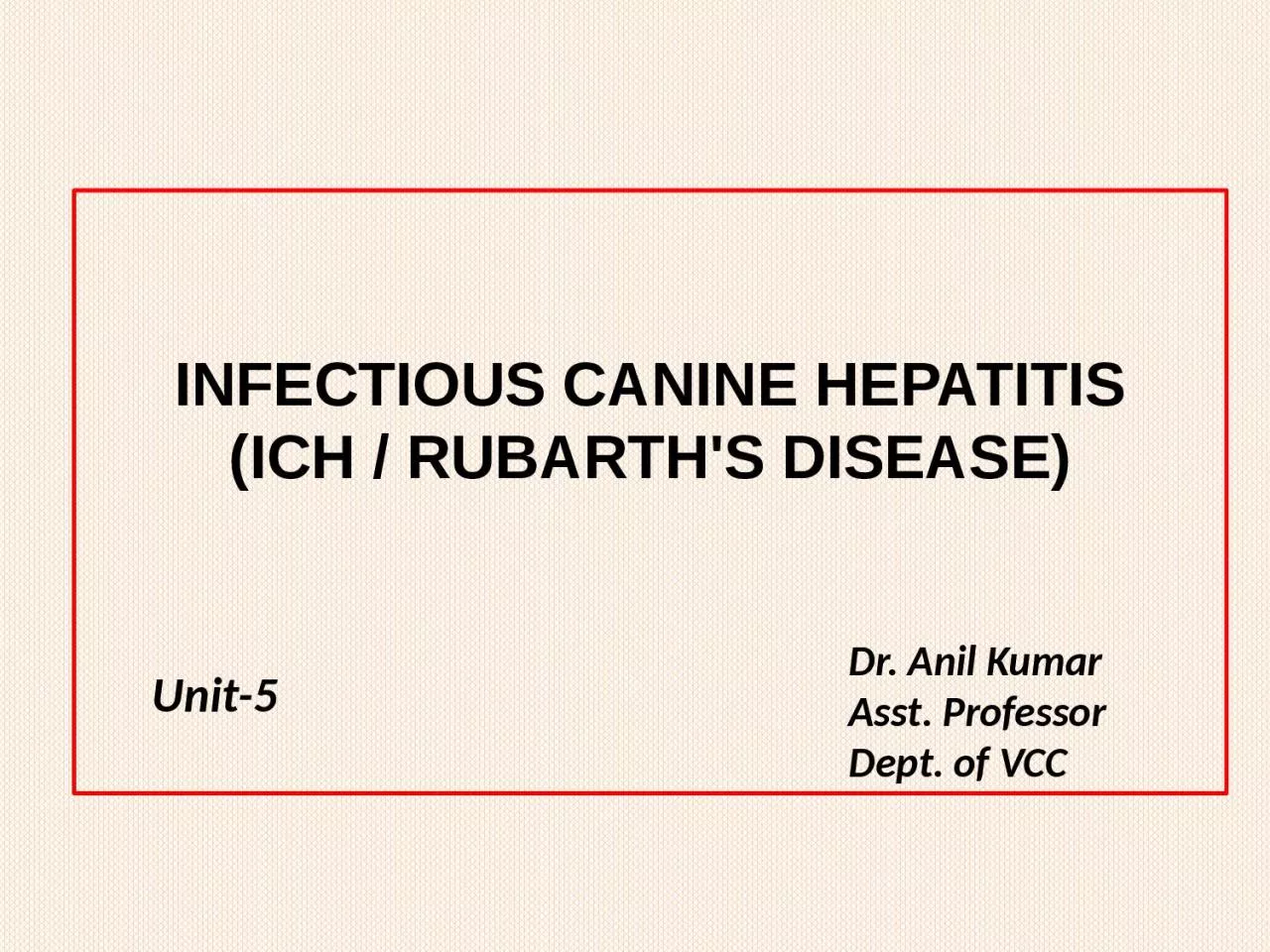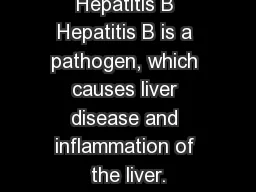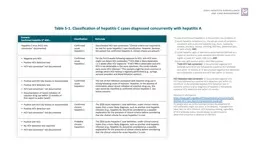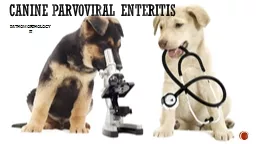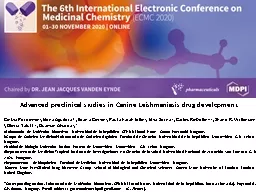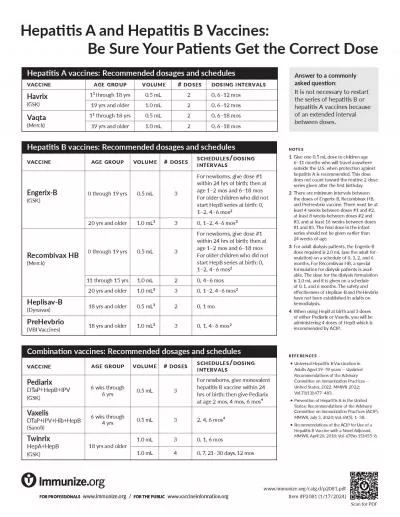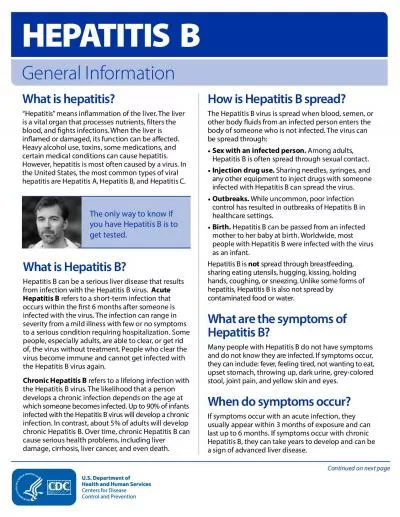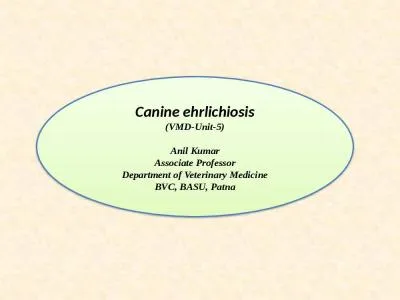PPT-INFECTIOUS Canine hepatitis
Author : mackenzie | Published Date : 2022-07-15
ich Rubarths disease Unit5 Dr Anil Kumar Asst Professor Dept of VCC ETIOLOGY canine adenovirus 1CAdV1 a DNA Virus Systemic disease Any age but young dogs in
Presentation Embed Code
Download Presentation
Download Presentation The PPT/PDF document "INFECTIOUS Canine hepatitis" is the property of its rightful owner. Permission is granted to download and print the materials on this website for personal, non-commercial use only, and to display it on your personal computer provided you do not modify the materials and that you retain all copyright notices contained in the materials. By downloading content from our website, you accept the terms of this agreement.
INFECTIOUS Canine hepatitis: Transcript
ich Rubarths disease Unit5 Dr Anil Kumar Asst Professor Dept of VCC ETIOLOGY canine adenovirus 1CAdV1 a DNA Virus Systemic disease Any age but young dogs in the first 2 years of life are more likely to . Hepatitis A formerly called infectious hepatitis and hepatitis B formerly called serum hepatitis have been recognized as separate entities since the early 1940s and can be diagnosed with specific serologic tests Delta hepatitis is an infection depen By: Danielle Roller. Societal Factors. . Increase in the # of dogs. 2002 . over 36% households have 1 or more. . . . 60 million . dogs. 2007 71 million dogs. Improving our own health as well as our animals. History . In 1963, Dr Baruch . Blumberg. accidentally discovered an antigen that detected the presence of hepatitis B in blood samples.. Dr . Blumberg. and his team identified a strange antigen from a blood sample of an Austrian Aborigine.. Scenario. Confirmed. . hepatitis. . A*. . AND…. Classification. Rationale. Hepatitis. . C. . virus. . (HCV). . test. . conversion. *. . documented. Confirmed. . acute. . hepatitis. . C. PATHOMORPHOLOGY . III. INDEX. ETIOLOGY. SOURCES OF INFECTION. TRANSMISSION. PATHOGENESIS. SYMPTOMS. PATHOLOGICAL CHANGES. HISTOPATHOLOGY. DIAGNOSIS. TREATMENT. PREVENTION. BIBLIOGRAPHY. ETIOLOGY. Canine . .. Cintya Perdomo . a. , Elena Aguilera . b. , Ileana Corvo. a. , Paula . Faral. -Tello . c. , Elva Serna . d. , Carlos . Robello. . c, e. , . Shane. R. . Wilkinson. f. , Gloria Yaluff . d. , . Guzmán . FREQUENTLY ASKED QUESTIONS Melissa Kennedy, DVM, PhD, DACVM | UTCVM Virology Laboratory | 865-974-8387vetmed.tennessee.eduUTCVM BIOMEDICAL & DIAGNOSTIC SCIENCES UPDATED 06/14/17University of Tenne vaccine age groupvolumeschedules/dosing intervalsEngerix-B(GlaxoSmithKline)For newborns, give dose #1 For older children who did not Combination vaccines: Recommended dosages and schedulesvaccine age The only way to know if you have Hepatitis B is to get tested. What is Hepatitis B?Hepatitis B can be a serious liver disease that results from infection with the Hepatitis B virus. Acute Hepatitis Epidemiologist Gary Heseltine MD MPH Texas Department of State Health Services 1100 W. 49th Street, Austin, Texas 78756. E - mail: gary.heseltine@dshs.state.tx.us Telephone: 512 - 776 - 6352, Fax: 51 In Indiana, the 10-year trend of hepatitis A decreased from 329 cases in 1997 to 33 cases in 2006. Many cases have unknown exposures, while some reported traveling internationally. In A in an element What else do we need to know?Inform your immunization provider if you or your child has any health problems or allergies. Your immunization provider will give you a record of you or your child’s A bout Preventing Hepatitis B Infection Bethesda, MD (November 2, 2018) – The National Foundation for Infectious Diseases (NFID) announced the launch of a new initiat vaccination rates in at - ris Anil Kumar. Associate Professor. Department of Veterinary Medicine. BVC, BASU, Patna. Introduction:. Canine . ehrlichiosis. is a . worldwide tick borne . diseases caused by . Ehrlichia. . canis. A.
Download Document
Here is the link to download the presentation.
"INFECTIOUS Canine hepatitis"The content belongs to its owner. You may download and print it for personal use, without modification, and keep all copyright notices. By downloading, you agree to these terms.
Related Documents

